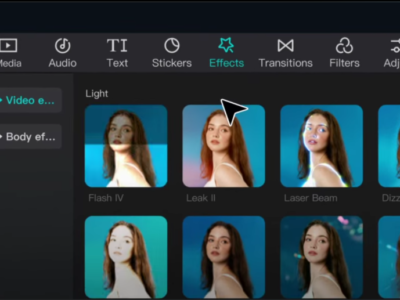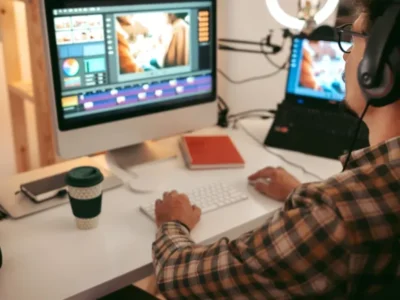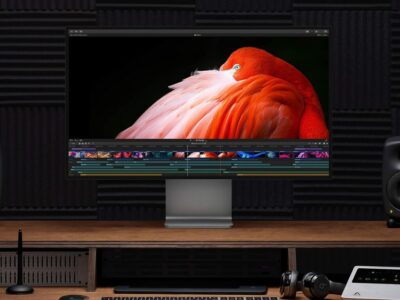How to become a motion designer? The answer to this question is not simple, however, with passion and dedication, you can become a top-level graphic designer. In this article, we will explore seven principles that can guide your path to success in motion design and shed light on how to become a motion designer.

How to Become a Motion Designer in 7 Steps:
1. Don’t Get Distracted; Focus on One Thing at a Time
Learning motion design requires unwavering concentration. The world is full of distractions, but success lies in overcoming them. Focus on one aspect at a time. Whether it’s mastering a specific software or diving into animation techniques, concentrate your efforts. Consider finding a learning buddy for mutual accountability. In the course, client quests often pair students up, enhancing effectiveness. Remember, progress is easier when attention is undivided.
2. Prioritize Creative and Marketing Skills Over Software Proficiency
The motion design landscape is evolving rapidly, with new software continually entering the scene. While staying updated on industry-standard tools is crucial, standing out requires more. Prioritize honing creative and marketing skills. These often underrated skills not only make you appealing to clients but also empower you to market yourself effectively. So, how to become a motion designer who stands out? Embrace storytelling and copywriting alongside animation and design skills.
3. Learn What You Need for Personal Projects
In a world inundated with tutorials and courses, the key is to balance learning with taking action. Implement learned skills into personal projects, creating a portfolio that reflects your unique style. Clients often assess personal work to gauge your preferences and creativity, making it essential for showcasing your capabilities. To become a motion designer with a distinct voice, learn just enough and then apply your skills through personal projects.
4. Create a Learning Plan for Structured Progress
To combat distraction and ensure consistent progress, create a quarterly learning plan. Divide the year into quarters and assign specific learning objectives to each. How to become a video editor or motion designer who evolves strategically? A structured plan ensures continuous improvement. Whether it’s systems and processes, storytelling, or copywriting, having a roadmap provides direction.
Film Composition Examples
Within this FREE PDF, you will discover:
- film composition examples in movies
- how filmmakers employ composition techniques
- how to create unforgettable cinematic experiences

5. Engage with Other Professionals and Communities
Accelerate your learning by connecting with other professionals. If working in-house isn’t an option, engage with communities online or through platforms like LinkedIn. Actively participate, offer value, and build relationships. Attend live events when possible, and contribute to the community, fostering both personal and professional growth. Networking is a powerful tool in your journey to become a motion designer.
6. Embrace Lifelong Learning
In an ever-evolving field, being a lifelong learner is crucial. Stay abreast of software changes and improvements. Sharpen your skills continuously to remain relevant and competitive. Motion design is a dynamic field, and your commitment to learning will set you apart.
7. Learn Just in Time
Adopt the philosophy of “learn just in time.” Instead of incessant learning without application, focus on acquiring knowledge when it aligns with your goals. If a specific project demands new skills or tools, learn them just in time for effective implementation. This approach ensures that your learning is purposeful and directly contributes to your growth as a motion designer or video editor.
How to Become a Motion Designer: Conclusion
In conclusion, the path to becoming a motion designer or video editor is multifaceted. Blend technical skills with creativity, marketing acumen, and a commitment to continuous learning. By following these principles, you can navigate the dynamic landscape of motion design and carve your path to success. Whether you are curious about how to become a motion designer or aspire to become a video editor, these principles provide a comprehensive guide for anyone looking to thrive in the world of motion design.
Film Composition Examples
Within this FREE PDF, you will discover:
- film composition examples in movies
- how filmmakers employ composition techniques
- how to create unforgettable cinematic experiences

Explore related content

Video Editing Tips CapCut: Tips, Tricks, and Techniques
Video editing is an art, and there are proper tools and techniques, through them everybody… Read More »Video Editing Tips CapCut: Tips, Tricks, and Techniques

Factors to Consider Before Buying a Video Editing Computer
From helping grow your brand and business to editing just for fun with the love… Read More »Factors to Consider Before Buying a Video Editing Computer

Best Video Editing Monitors in 2024
In the evolving world of video production, the importance of a high-quality monitor cannot be… Read More »Best Video Editing Monitors in 2024